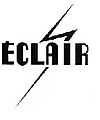Eclair (company)



Éclair was a film production, film laboratory and movie camera manufacturing company established in Épinay-sur-Seine, France by Charles Jourjon in 1907.
Originally a production company, they started building cameras in 1912. Among their early models was the Caméréclair of 1928, then the Camé 300 Réflex, both successful studio cameras. Their real breakthrough design, the Caméflex (shoulder-held portable 35mm camera with instant-change magazines, with later 16/35mm dual format option) introduced in 1947, played a major part in the French New Wave by allowing for a freer form of shooting 35mm fiction films.
Later 16mm silent models such as the 1960 Eclair NPR (aka "Eclair 16" or "Eclair Coutant") and the 1971 Eclair ACL were documentary cinema favorites. NPR stands for Noiseless Portable Reflex and ACL comes from the letters of the names of its designers Agusti (Austin) Coma and Jacques Lecoeur. The last models designed by Eclair in the early 80's came too late to save the company from bankruptcy and were hardly produced, if at all : the Eclair EX16 (similar to ACL with fixed viewfinder and 24/25fps fixed motor) and the Eclair PANORAM (first dual format 16+Super16 camera with "Varigate" system).
An Eclair 16 was used by L.M. Kit Carson (and discussed, on camera) in Jim McBride's ground-breaking film, David Holzman's Diary (1967). Two years later, the NPR was chosen by director Michael Wadleigh to shoot his documentary Woodstock. Wadleigh used sixteen NPR cameras, and in Woodstock: From Festival to Feature, he explained some of the challenges he faced using a then seven-year-old camera in a manner that would have been unheard of for 35mm movie cameras, let alone the relatively untried NPR. That they succeeded so spectacularly is a testament to the NPR's sturdiness.
The instant clip-on design of the camera magazine of the Caméflex and later the NPR, ACL, EX16 and PANORAM models' coaxial magazines revolutionized filmmaking, in particular documentary films, since magazine changes could now be made in seconds without the need to spend time lacing the film in the camera. The ACL model used a focal plane shutter for exposure and a side-to-side oscillating mirror for reflex viewing to keep the camera body size to a minimum.
The company was acquired in late 1968 by British film producer Harry Saltzman who then founded the Éclair-Debrie (UK) Ltd company and moved production to the United Kingdom. Meanwhile Soremec-Cehess took over the French side of the company and resumed production in France, so English Eclair cameras (similar to the French product with minor differences) were manufactured simultaneously for a few years until Éclair-Debrie (UK) Ltd ceased activities in 1973. Production then continued in France only with a good degree of success, but the company eventually declined in the late 70's and early 80's until it was eventually sold to Aaton S.A. in 1986 who ceased all camera production, offering only a license for maintenance of the many existing cameras.
The film processing and post-production side of Éclair continues to operate.
External links
- Eclair 16mm Community Site
- Internet Encyclopedia of Cinematographers camera section
- A site dedicated to the eclair ACL
- eclair ACL manuals
- BBC Documentary: "The Camera That Changed the World"